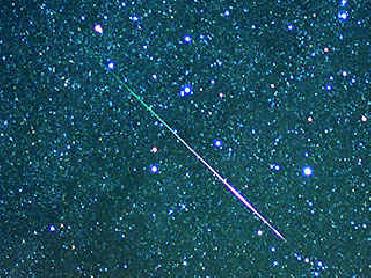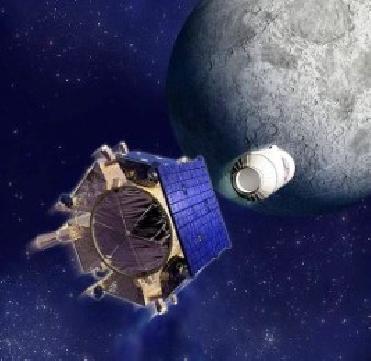
The Leonid meteor shower lights up the night sky in a November 2001 file photo.
NEW DELHI (PTI): Startling streaks of light will brighten up the sky with the Leonid meteor shower on Tuesday night.
Sky gazers are expected to see shooting stars whizzing past in the skies at an amazing rate as Leonid meteor shower will be seen on the night of November 17 and 18, SPACE President C B Devgun told PTI.
Leonids are a prolific meteor showers associated with the comet 55p/Tempel-Tuttle, he said, adding that it is visible every year around November 17 when the Earth passes through the stream of debris of the comet.
"As the night progresses, the number of meteors is expected to rise and if the forecast timings are accurate, it may peak between 0304 hrs and 0314 hrs of November 18 and may have hundreds per hour. But this year, the meteors will be much faster and of short duration," Devgun said.
The Indian subcontinent is best placed for the spectacle this year and one can expect a strong outburst (during the peak), where the rates may race up to 300 per hour," Indian Institute of Astrophysics scientist R C Kapoor told PTI.
The name Leonids is given as the point of origin of the shower, lies in the direction of the constellation of Leo.
Leonid showers are famous for being among the most spectacular fire works in the night sky since long. The great Leonids meteor storm seen in the year 1833 has become a legend for the great strength it showed up with. It was followed with similar ones in 1866 and 1867. However, in 1998 the showers were much below expectation.
The comet, 55p/Tempel-Tuttle, was discovered on December 19, 1865, by E W Liebrecht Tempel and by H P Tuttle independently on January 6, 1866. The comet's orbit is so oriented that its trail of debris almost exactly intercepts Earth. The comet thus comes quite close to the Earth when they cross each other.
The best locations to view the Leonids outburst would be India, Nepal, Thailand, Western China, Tajikistan, Afghanistan, Eastern Iran and South Central Russia among others.
Meteors, also called shooting stars, are startling streaks of light that suddenly appear in the sky when a dust particle from outer space evaporates high in the Earth's atmosphere.
Most visible Leonids are between one mm and one cm in diameter, Devgun said. A Leonid meteor, barely visible to the naked eye in a dark sky, is caused by a meteoroid of 0.5 mm in diameter and weights only 0.00006 gram.
Just before they enter the Earth's atmosphere, Leonid debris travel at 71 kilometres per second, or 213 times as fast as the speed of sound, Devgun added.
Usually, no sound is heard when a Leonid passes by, however, a sonic boom is sometimes possible for very bright Leonid meteors, called fireballs, Devgun said.
To watch Leonid, the best area would be a place where light pollution is at its minimum, he said adding that the best time would be around midnight. By then, LEO constellation (radiant of Leonids) will be fairly high above the horizon. An hour or two before dawn should be the best of all, he added.
 Previous Article
Previous Article Next Article
Next Article












The Indian Air Force, in its flight trials evaluation report submitted before the Defence Ministry l..
view articleAn insight into the Medium Multi-Role Combat Aircraft competition...
view articleSky enthusiasts can now spot the International Space Station (ISS) commanded by Indian-American astr..
view article